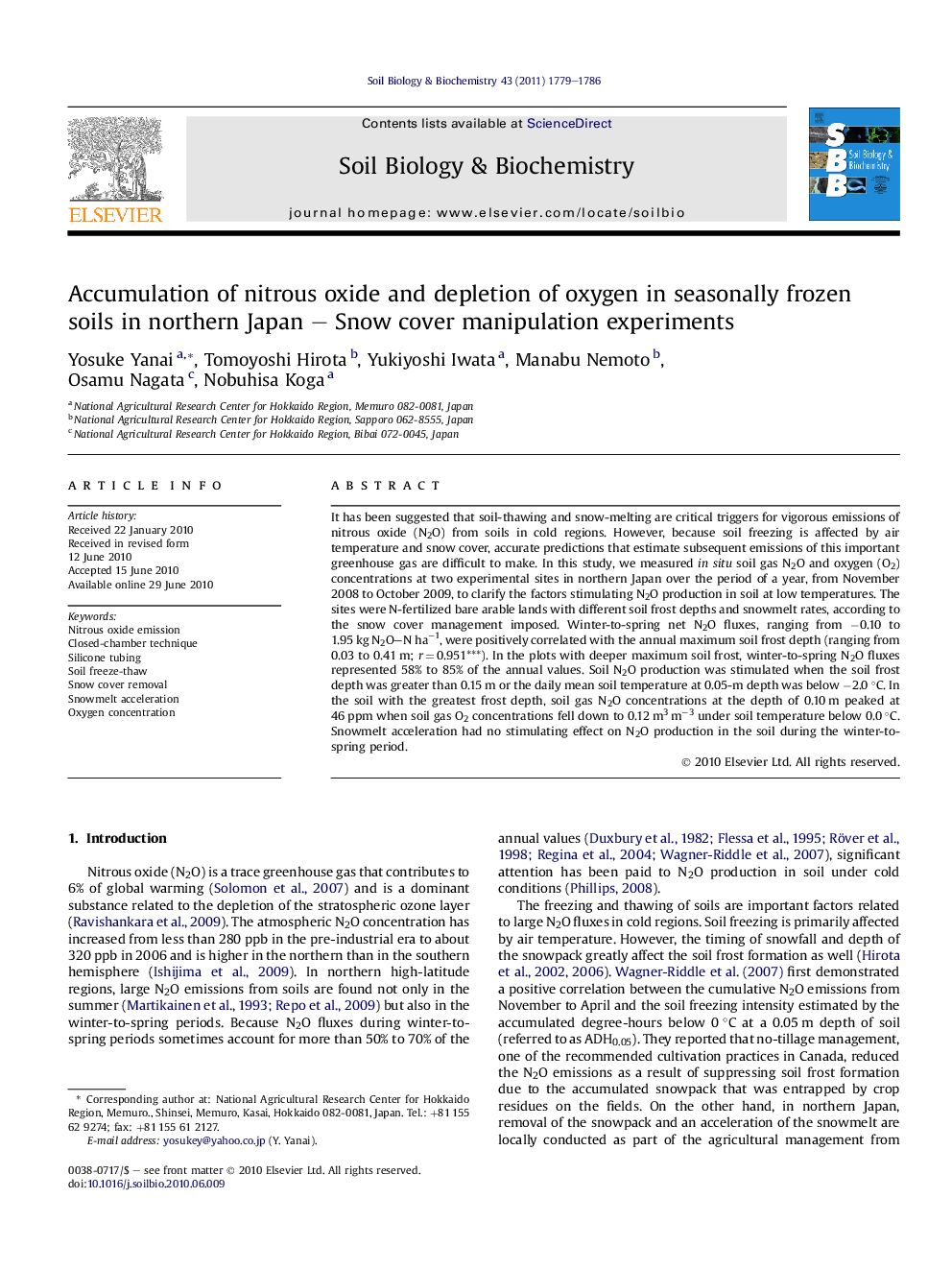| Article ID | Journal | Published Year | Pages | File Type |
|---|---|---|---|---|
| 2025237 | Soil Biology and Biochemistry | 2011 | 8 Pages |
It has been suggested that soil-thawing and snow-melting are critical triggers for vigorous emissions of nitrous oxide (N2O) from soils in cold regions. However, because soil freezing is affected by air temperature and snow cover, accurate predictions that estimate subsequent emissions of this important greenhouse gas are difficult to make. In this study, we measured in situ soil gas N2O and oxygen (O2) concentrations at two experimental sites in northern Japan over the period of a year, from November 2008 to October 2009, to clarify the factors stimulating N2O production in soil at low temperatures. The sites were N-fertilized bare arable lands with different soil frost depths and snowmelt rates, according to the snow cover management imposed. Winter-to-spring net N2O fluxes, ranging from −0.10 to 1.95 kg N2O–N ha−1, were positively correlated with the annual maximum soil frost depth (ranging from 0.03 to 0.41 m; r = 0.951***). In the plots with deeper maximum soil frost, winter-to-spring N2O fluxes represented 58% to 85% of the annual values. Soil N2O production was stimulated when the soil frost depth was greater than 0.15 m or the daily mean soil temperature at 0.05-m depth was below −2.0 °C. In the soil with the greatest frost depth, soil gas N2O concentrations at the depth of 0.10 m peaked at 46 ppm when soil gas O2 concentrations fell down to 0.12 m3 m−3 under soil temperature below 0.0 °C. Snowmelt acceleration had no stimulating effect on N2O production in the soil during the winter-to-spring period.
